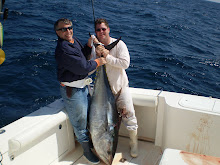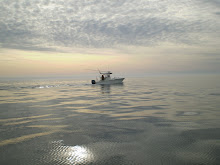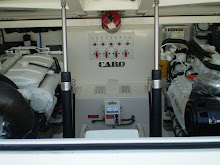
By Jim Field
The NY Times reports today that some shipping companies are reducing the speed of their ships for economic and ecological purposes. While transportation has always operated by the rule that speed of delivery is essential, the 21th century standard operating procedure (SOP) might become "slow is better."
The Danish shipping giant, Maersk lines, is one of the new believers. By halving its top cruising speeds over the last two years, the company has cut fuel consumption by 30%, saving bundles. But it also achieved equivalent cuts in emissions of greenhouse gases (carbon dioxide). Travelng more slowly, said a spokesman, "is a great opportunity to lower emissions without a quantum leap in innovation."
The transit time from Germany to China, for example, under lower speeds takes just over a month, a week long than before. The idea first took root in 2008, when oil prices rose to $145 per barrel. The physics are simple: slowing down from high speeds lowers emmisions and fuel consumption by reducing drag and friction as the ship pushes through the water.
Across the world's cargo fleet, more than 220 vessels are practicing "slow steaming," which equates to cruising at 20 knots in open water versus the standard 24or 25 knots. Maersk's vessels go even further, employing "super slow steaming," which produces a speed of 12 knots.
The question remains, however, how the porpoise will react. Will slower speeds proportionately reduce the joy associated with riding the bow waves of these steel giants? Will they need to seek out other sources of fun to get their fix? Or will slower speeds open up new joys for the aged porpoise among them? Only time will tell. We'll keep an eye on it as we fish.
Resting at the pier. Crew takes in church services

Overseeing the automated loading of containers. "Oh, my back."

This is what porpoise can't get enough of










No comments:
Post a Comment